A child protection worker is in the home of an indigenous family. There, to investigate possible neglect. The worker opens a kitchen cupboard door.
There’s no food.
At least, not traditional Canadian food. No boxes of cereal. No cans of soup. Nothing.
Only flour. Oatmeal. Lard. And maybe powdered milk, or milk in the fridge.
The assumption: neglect.
But sometimes the provincially-defined concept of neglect, one reason a child might be taken into care, is broad and does not always reflect indigenous values, says Jennifer Dockstader, executive director of the Fort Erie Native Friendship Centre.
“The worker needs to understand that the family can still be fed with that,” she says.
Maybe the family is picking up food from the friendship centre’s pantry the next day. Or is at the centre daily for breakfast and lunch. Or had planned to pick up a food voucher for groceries.
The family, might be scared to talk. To explain all this to the child protection worker, because of a deeply-rooted fear and mistrust.
“Maybe the defensiveness of the parents isn’t really anger. It’s fear,” she says.
Almost one quarter of all children in the care of Family and Children’s Services Niagara are indigenous. That’s 117 indigenous children, out of a total of 487 children in care, says FACS Niagara’s executive director, Anna Bozza.
Across Niagara, indigenous people represent about 15 per cent of the population.
The simple fact is, that’s too many children, say local indigenous leaders.
More complicated are the reasons why the number is so high. And, the solutions to fix it. It’s rooted in hundreds of years of Canadian history. Of truths not told. And of judgements passed, assumptions made and misunderstandings perpetuated.
In the words of Wendy Sturgeon, executive director of Niagara’s Native Women Inc.: “Everyone goes into child welfare with a good heart,” she says.
“But they don’t always know the history of what child welfare has meant to indigenous people.”
Residential schools. The 60s Scoop, where indigenous children were removed from their homes, and placed with non-aboriginal families. Poverty. The list is long.
On Wednesday, aboriginal educator, facilitator and author Kelly Brownbill, spoke to staff at FACS Niagara as part of cultural awareness training aimed at strengthening relationships between aboriginal and non-aboriginal communities, through education and understanding. Two years ago, she presented a three-day training session, mandatory for all FACS staff.
“It gets them better prepared not to repeat what wasn’t working for the past 500 years,” she says.
Simply put, it’s about understanding and honouring the indigenous culture.
And that, will help to reduce the number of aboriginal children put into care and the length of time they stay in care, she says. It will also help children maintain their identity if they need to be removed from their family, she says.
It’s about being equitable.
“Indigenous people have survived the extraordinary history of assimilation and colonization, which affects how we access services,” says Brownbill.
“We need to give tools to workers to make sure indigenous clients have equitable access to services.”
Indeed, everyone agrees that FACS Niagara has been progressive.
Says Anna Bozza, FACS Niagara’s executive director: “Now that we know the history, it’s an obligation for us. The approach has to be different.”
Since 2008, it has been building relationships with the native community in Niagara.
One example is an aboriginal child advocate, hired by and working for the Native Women Inc., was given space at FACS to work alongside the team of child workers.
In the scenario of an empty food cupboard, the advocate would attend with the child protection worker, and be able to act as a cultural translator of sorts. To interpret cultural differences that might otherwise lead to false assumptions, and perhaps children being removed from the home, says Sturgeon.
Advocates can be involved at all stages of child welfare.
They might connect families at risk of having their children apprehended, to native friendship centres, programs and other community resources that offer support in a way that is meaningful to them. And avoid indigenous children being put into care, says Sturgeon.
Parents might attend a drop-in program at the Fort Erie Native Friendship Centre, where they are fed, mentored, taught traditional parenting skills and learn about child development from an aboriginal perspective. Referred here, by FACS, says Dockstader.
“Families needed a way to come together in a safe space, where they would be encompassed by community,” she says.
“Without it feeling, to the families, as if they’re being watched all the time.”
If a child needs to be removed from the parents’ care, the goal is to remain with the native community. A planning meeting, traditionally held at an office, would instead happen at a native centre. Everyone – parents, grandparents, advocate, and professionals from indigenous agencies – sit in a circle, where everyone is equal. There is no power differential, says Dockstader.
The facilitator uses cultural tools. A feather. Smudge bowl. Drum and a song. Everyone participates and a plan is developed.
But there is more work to be done. More understanding needed. And that will take more patience, and time, says Dockstader.
And that is why Brownbill is here again. To tell the story. To educate.
“It’s giving them tools to walk together. Not for them to fix us, but for our community and mainstream community to walk together,” she says.
“Our whole society gets better.”
Source: St. Catharines Standard


